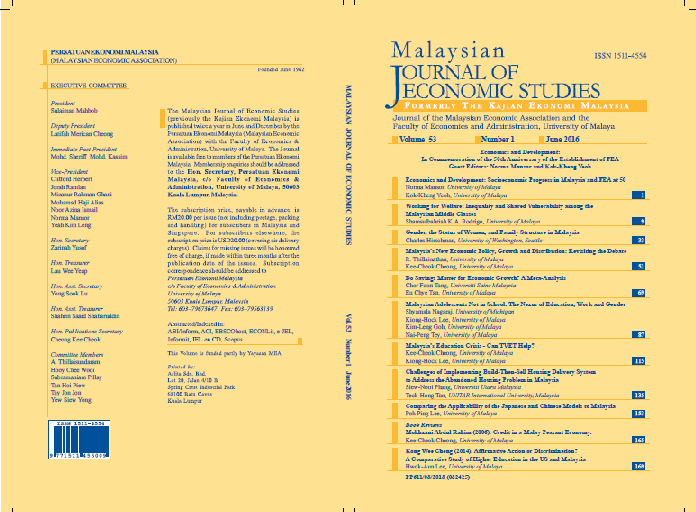Malaysia’s Education Crisis – Can TVET Help?
Keywords:
Coordination, education, stakeholders, vocational training, workforce developmentAbstract
Realisation of Vision 2020, that is, to become a high-income country by 2020, requires Malaysia to move up the production value chain, away from the current low-cost labour model that relies heavily on imported workers. Education’s role in producing the human capital needed is crucial. Unfortunately, despite heavy allocations for education, the quality of education leaves much to be desired. Technical and vocational education and training, an important part of the education system have so far played a minor role in the education system. This is a missed opportunity, given that a systems approach to workforce development can have a salutary impact. Despite improvements over the past decade, several weaknesses have hobbled technical and vocational education and training, preventing it from playing a supportive role to academic education. The lack of coordination among key stakeholders is a major problem. Yet Malaysia’s neighbour, Singapore, boasts a vocational training system that has won high praise. At the centre of the Singapore’s system is the Tripartite Alliance, which brings together the key stakeholders, namely the Government, employers, and the workforce. In drawing lessons to overcome deficiencies in vocational training, Malaysia does not have to look far.

